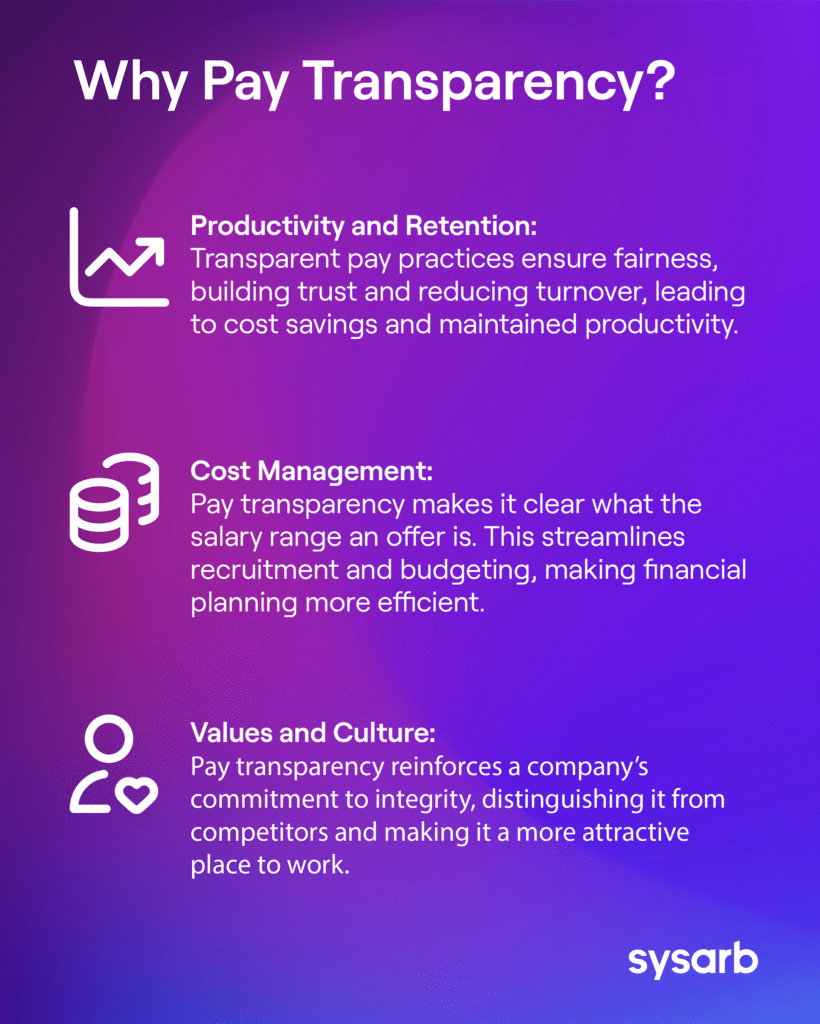
Curious about what the future holds for pay transparency? Well, buckle up because it seems we're in for quite the journey! The push towards pay transparency isn't just a temporary trend that's here today and gone tomorrow. It's quickly becoming the standard for fostering an environment rooted in fairness, trust, and inclusivity. There's a growing chorus of voices agreeing that opening up about salaries isn't just a nice-to-have—it's a crucial part of a company's DNA. So, what does this mean for the future? Let's dive into the top trends shaping pay transparency in 2024 and see what insights we can uncover!
Modern employees seek to feel valued and heard in the workplace. By adopting transparent pay practices, companies can demonstrate their commitment to transparency, leading to improvements in employee trust, morale, and engagement. This, in turn, contributes to higher productivity and retention rates.
Governments and regulatory bodies are increasingly emphasizing the importance of pay transparency in creating a level playing field for all employees. As a result, many countries and states are implementing laws mandating companies to disclose their pay practices. Compliance with pay transparency regulations is becoming a key focus for organizations looking to ensure fairness and equality in their operations.
Beyond just the paycheck, today's workforce is interested in understanding the full spectrum of their career development. Clear communication about career progression opportunities, transparent performance evaluations, and accessible diversity and inclusion data are essential components of holistic transparency. By being open about pay decisions and career development processes, employers can build trust and promote a sense of fairness and equality among their employees.
Technological advancements, particularly in Artificial Intelligence and machine learning, are revolutionizing how companies approach pay transparency. These tools enable organizations to analyze large datasets accurately and swiftly, identifying pay gaps and discrepancies with precision. Integrating tech-driven solutions from master data sources is crucial for effectively addressing pay transparency challenges from multiple angles.
While the trend toward transparency is gaining momentum, it is essential for companies to strike a balance between openness and individual privacy. Safeguarding sensitive employee data while sharing pay information transparently requires robust data protection measures and careful consideration. By navigating this delicate balance, organizations can uphold transparency while respecting the privacy of their employees.
Looking ahead, it's evident that the move towards pay transparency is not just a fleeting trend. It's a transformative shift towards creating workplaces that are fair, inclusive, and empowering. The journey toward this future has its challenges, but it also has immense opportunities for companies to redefine their relationships with their employees. By embracing openness, adopting new technologies, and promoting an environment of honesty, organizations can not only meet legal expectations but also lead the way in building a more equitable world of work. In the dynamic and complex landscape of 2024, the push for pay transparency stands out not only as a legal necessity but as a key strategy and ethical duty. It signals the beginning of an era where fairness, trust, and belonging are not just goals, but actual features of the workplace.


.webp)